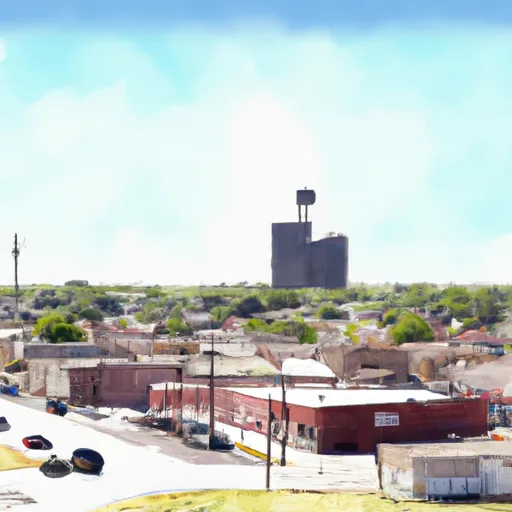-
 Snoflo Premium
Snoflo Premium
Get unlimited access to all our content
With no Ad interruptions! - Start Your Free Trial Login with existing account
Tell
Eden Index
Climate
7.9
•
Recreation
•
Community
•
Safeguard
3.2/10

Tell, Texas is a small town located in the western part of the state. It experiences a semi-arid climate with hot summers and mild winters. Summers are characterized by high temperatures often exceeding 100 degrees Fahrenheit, while winters are relatively mild with temperatures averaging around 60 degrees Fahrenheit. The area receives limited rainfall, with most precipitation occurring during the winter months.
The hydrology constituents in Tell, Texas are primarily influenced by the nearby Pecos River. The river serves as a source of water for the town, and it also offers opportunities for fishing and boating. The river is home to various fish species, including bass, catfish, and trout.
For outdoor enthusiasts, Tell, Texas provides several recreational opportunities. The town is surrounded by beautiful natural landscapes, including desert areas and mountain ranges. Hiking and camping are popular activities, allowing visitors to explore the scenic trails and enjoy the tranquility of the area. Additionally, the nearby Davis Mountains State Park offers opportunities for birdwatching, stargazing, and horseback riding.
Overall, Tell, Texas offers a semi-arid climate, hydrology influenced by the Pecos River, and a range of outdoor recreation opportunities in its stunning natural surroundings.
What is the Eden Index?
The Snoflo Eden Index serves as a comprehensive rating system for regions, evaluating their desirability through a holistic assessment of climate health, outdoor recreation opportunities, and natural disaster risk, acknowledging the profound impact of these factors on livability and well-being.
Climate Health Indicator (CHI): 7.9
Tell receives approximately
569mm of rain per year,
with humidity levels near 84%
and air temperatures averaging around
17°C.
Tell has a plant hardyness factor of
7, meaning
plants and agriculture in this region tend to thrive during the non-winter months.
By considering the ideal temperature range, reliable water supplies, clean air, and stable seasonal rain or snowpacks, the Climate Health Indicator (CHI) underscores the significance of a healthy climate as the foundation for quality living.
A healthy climate is paramount for ensuring a high quality of life and livability in a region, fostering both physical well-being and environmental harmony. This can be characterized by ideal temperatures, reliable access to water supplies, clean air, and consistent seasonal rain or snowpacks.
Weather Forecast
Streamflow Conditions
Red-Pease
Area Rivers
Red-Pease
Snowpack Depths
Red-Pease
Reservoir Storage Capacity
Red-Pease
Groundwater Levels
Recreational Opportunity Index (ROI):
The Recreational Opportunity Index (ROI) recognizes the value of outdoor recreational options, such as parks, hiking trails, camping sites, and fishing spots, while acknowledging that climate plays a pivotal role in ensuring the comfort and consistency of these experiences.
Access to outdoor recreational opportunities, encompassing activities such as parks, hiking, camping, and fishing, is crucial for overall well-being, and the climate plays a pivotal role in enabling and enhancing these experiences, ensuring that individuals can engage in nature-based activities comfortably and consistently.
Camping Areas
| Campground | Campsites | Reservations | Toilets | Showers | Elevation |
|---|---|---|---|---|---|
| Jayton RV Park | None | 2,008 ft |
Nearby Ski Areas
Catastrophe Safeguard Index (CSI):
The Catastrophe Safeguard Index (CSI) recognizes that natural disaster risk, encompassing floods, fires, hurricanes, and tornadoes, can drastically affect safety and the overall appeal of an area.
The level of natural disaster risk in a region significantly affects safety and the overall livability, with climate change amplifying these risks by potentially increasing the frequency and intensity of events like floods, fires, hurricanes, and tornadoes, thereby posing substantial challenges to community resilience and well-being.
Community Resilience Indicator (CRI):
The Community Resilience Indicator (CRI) recognizes that education, healthcare, and socioeconomics are crucial to the well-being of a region. The CRI acknowledges the profound impact of these elements on residents' overall quality of life. By evaluating educational resources, healthcare accessibility, and economic inclusivity, the index captures the essential aspects that contribute to a thriving community, fostering resident satisfaction, equity, and social cohesion.

